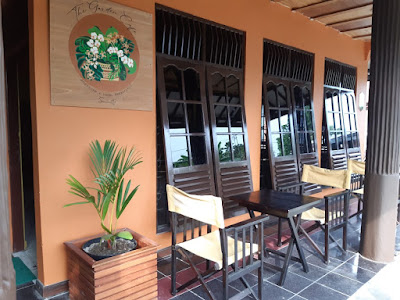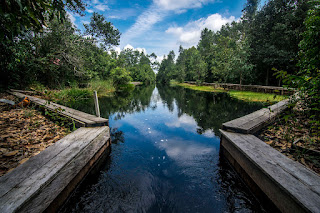Recent renovations to the Rahai'i Pangun improved the cabins, added ensuites and replaced equipment. She is returned, happily plying the river she has serviced for 50 years. A grand old lady, she was built in the locally famous Mandomai carpentry school near the regional capital of Pulang Pisau on the Kapuas River. Built solely from the first-grade hardwood called ulin growing prolifically in those days, she has outlived many other vessels on the river. Launched with the name Noah, she was purchased by Wow Borneo in 2014 and comprehensively converted and upgraded. We take maintenance seriously, and in spite of the worst possible conditions - extreme tempratures, heavy rain and widely variable river conditions - she continues to live up to her new name, Rahai'i Pangun. It means big development in Dayak, and she continues to pioneer a river tourism industry along the Kahayan River.
Palangkaraya Impressions
Journeys in and around Palangkaraya and Central Kalimantan with prose snapshots and photographic essays.
Monday, September 18, 2023
Thursday, May 5, 2022
The improbable proboscis monkey
Nasalis larvatus is a large, exquisitely coloured and graceful monkey that is a native of the rivers, swamps and coastal mangroves of Borneo. It is classified as endangered in the IUCN Red List of Threatened Species due to habitat loss, illegal poaching, and land conversion.
Among the largest of Asia's monkey species, they are found in energetic groups along riversides often near the sea. This guy is photographed by the side of the Sekonyer River, along the boundaries of the Tanjung Puting National Park. Like orangutans, the proboscis or bekantan (as it is locally known) is one of the Bornean flagships that faces serious threats to its population.
It may seem hard to believe, but male proboscis monkeys probably use their out-sized noses to attract mates by amplifying their calls to mates and rivals. They are a highly arboreal species, making spectacular leaps through the canopy, and will venture onto land only occasionally to search for food. They live in organized harem groups consisting of a dominant male and two to seven females and their offspring. Various groups often congregate near water at night to sleep.
Apart from their unique noses and elegant colouring, with the long pure white tail, Proboscis monkeys are the primate world’s most prolific swimmers. They can often be glimpsed crossing rivers in search of food, using their webbed feet and hands to help them outpace the crocodiles, which are their main predator. Over the last 40 years, proboscis monkey populations have plummeted. They are currently protected from hunting or capture in Borneo.
Join Wow Borneo's cruises into Tanjung Puting National Park and to the Sebangau National Park to glimpse these improbable and highly specialised creatures in their native habitats!
Friday, April 15, 2022
Longhouse at Tumbang Manggu
On the Samba tributary of the Katingan River sits this stunning longhouse or betang at Tumbang Manggu. Although constructed over the last 3 decades, it is conceived on traditional principles, using the endemic trees from the once embracing forest - notably massive ironwood treetrunks. Many meters high for safety from annual floods, marauding animals and rival tribes, it was built and occupied by a Dayak family who is locally famous for traditional crafts and especially for dance. Here below is Chechen prepared to perform the sword dance in traditional garb. He trains a village group in dance and the accompanying rituals. Here he is seen on the niched pole which gives access to the betang.
Tuesday, May 11, 2021
The Garden on Kahayan
Opening early for breakfast, come and sit in our delightful and central Garden Cafe on Kahayan for an American style bagel breakfast, all baked in house. We're open through lunch as well. Enjoy our comfortable outdoor area under the trees or inside on the sofas. Meeting rooms make this a perfect setting for small group meetings. Check out our Menu below. We also sell some of the amazing plants we have in The Garden. Great food, great ambiance, great drinks!






















































